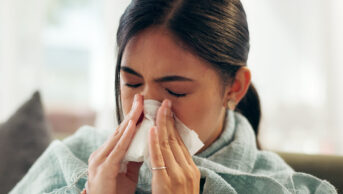
Papa Kay / Alamy Stock Photo
The number of adrenaline auto-injectors provided in the UK for children has risen dramatically since 2000, but researchers say the reasons for the prescriptions are often unclear.
Researchers from the University of Birmingham analysed GP data from 1.06 million children between 2000 and 2012, finding 23,837 who were recorded as ‘high risk’ and prescribed at least one auto-injector device.
In all, only 50% of the children were noted as having an allergy to egg, nut, seafood, insect venom or had previously had anaphylaxis.
Over the 12-year period, the proportion of children issued with an adrenaline auto-injector increased by 355%.
Further calculations showed there was a 506% increase in the total number of devices prescribed per 1,000 person years in the UK and the number of devices prescribed per child also rose by 33%.
The figures showed significant variation in the number of devices prescribed for a child in a year, with numbers hitting as high as 40 – although the average was between three and four. Over time the data suggested an increasing trend in children being prescribed four or more devices.
The researchers concluded that there had been a “sharp increase” in prescribing of adrenaline auto-injectors in recent years but that only half the children seemed to have a reason recorded in their notes and that “the rationale for prescribing is, in many cases, unclear”.
Writing in the British Journal of General Practice
[1]
(online, 14 March 2017), they said that clarifying the indications for prescribing an optimal number of devices could be “cost saving to the NHS”.
References
[1] Diwakar L, Cummins C, Ryan R et al. Prescription rates of adrenaline auto-injectors for children in UK general practice: a retrospective cohort study. Br J Gen Pract 2017. doi: https://doi.org/10.3399/bjgp17X689917


